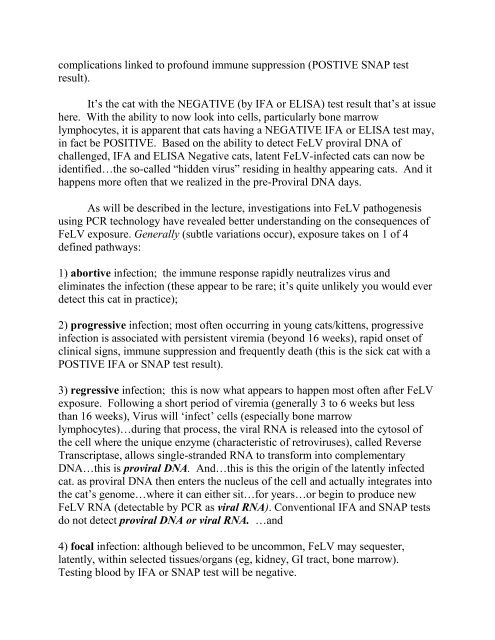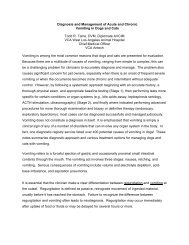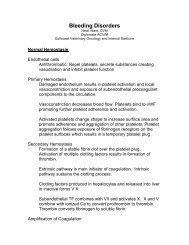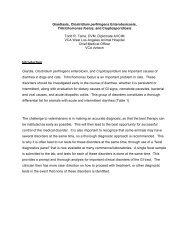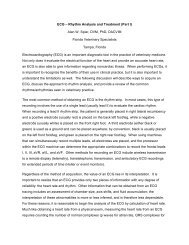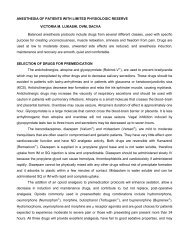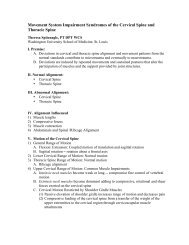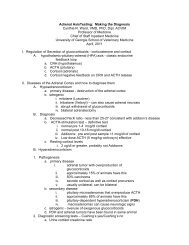Feline Leukemia Virus and Feline Immunodeficiency Virus ...
Feline Leukemia Virus and Feline Immunodeficiency Virus ...
Feline Leukemia Virus and Feline Immunodeficiency Virus ...
- No tags were found...
Create successful ePaper yourself
Turn your PDF publications into a flip-book with our unique Google optimized e-Paper software.
complications linked to profound immune suppression (POSTIVE SNAP testresult).It’s the cat with the NEGATIVE (by IFA or ELISA) test result that’s at issuehere. With the ability to now look into cells, particularly bone marrowlymphocytes, it is apparent that cats having a NEGATIVE IFA or ELISA test may,in fact be POSITIVE. Based on the ability to detect FeLV proviral DNA ofchallenged, IFA <strong>and</strong> ELISA Negative cats, latent FeLV-infected cats can now beidentified…the so-called “hidden virus” residing in healthy appearing cats. And ithappens more often that we realized in the pre-Proviral DNA days.As will be described in the lecture, investigations into FeLV pathogenesisusing PCR technology have revealed better underst<strong>and</strong>ing on the consequences ofFeLV exposure. Generally (subtle variations occur), exposure takes on 1 of 4defined pathways:1) abortive infection; the immune response rapidly neutralizes virus <strong>and</strong>eliminates the infection (these appear to be rare; it’s quite unlikely you would everdetect this cat in practice);2) progressive infection; most often occurring in young cats/kittens, progressiveinfection is associated with persistent viremia (beyond 16 weeks), rapid onset ofclinical signs, immune suppression <strong>and</strong> frequently death (this is the sick cat with aPOSTIVE IFA or SNAP test result).3) regressive infection; this is now what appears to happen most often after FeLVexposure. Following a short period of viremia (generally 3 to 6 weeks but lessthan 16 weeks), <strong>Virus</strong> will ‘infect’ cells (especially bone marrowlymphocytes)…during that process, the viral RNA is released into the cytosol ofthe cell where the unique enzyme (characteristic of retroviruses), called ReverseTranscriptase, allows single-str<strong>and</strong>ed RNA to transform into complementaryDNA…this is proviral DNA. And…this is this the origin of the latently infectedcat. as proviral DNA then enters the nucleus of the cell <strong>and</strong> actually integrates intothe cat’s genome…where it can either sit…for years…or begin to produce newFeLV RNA (detectable by PCR as viral RNA). Conventional IFA <strong>and</strong> SNAP testsdo not detect proviral DNA or viral RNA. …<strong>and</strong>4) focal infection: although believed to be uncommon, FeLV may sequester,latently, within selected tissues/organs (eg, kidney, GI tract, bone marrow).Testing blood by IFA or SNAP test will be negative.


